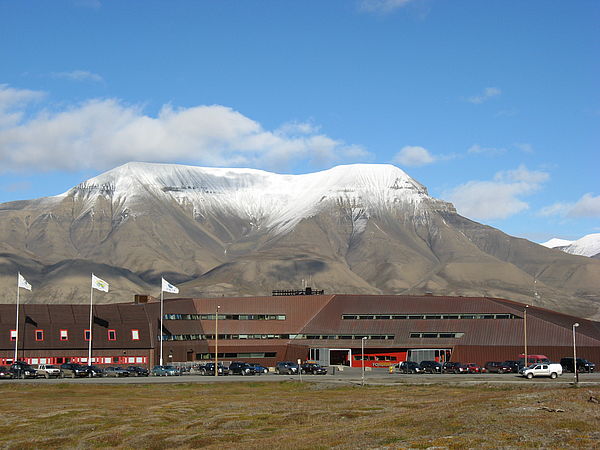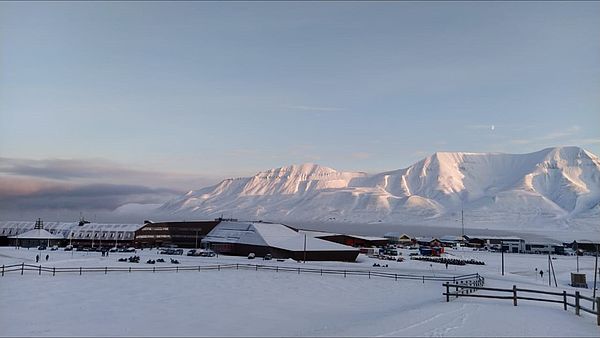
Background
SIOS3 | |
Svalbard Science Centre | |
https://www.unis.no/https://www.npolar.no/longyearbyen/https://sios-svalbard.org/ | |
Arctic | |
Open | |
Station | |
Norway | |
None | |
2006 | |
Year-Round |
Introduction
Svalbard Science Centre (SSC) is the hub for research and higher education in Longyearbyen and hosts the University Centre in Svalbard (UNIS), the Norwegian Polar Institute (NPI), SIOS Knowledge Centre (SIOS-KC) and others. | |
SSC is located centrally in Longyearbyen, the administrative centre and largest settlement in the High Arctic archipelago of Svalbard, Norway. | |
Longyearbyen is located in the Longyear valley, where the Longyear river drains into the Advent fjord. The area is characterised by High Arctic tundra vegetation, mountains, wide valleys and glaciers. The local fauna consist of reindeer, arctic fox, polar bear, ptarmigan, a large variety of migratory birds, marine mammals and fish. | |
UNIS was first established in 1993 and the first building in the current location was opened in 1995. Svalbard Science Centre was established in 2006 when the existing building was extended to include facilities for additional institutions, including NPI and Svalbard Museum. SSC is a world-class base for Arctic research, with extensive laboratory and logistical support facilities. | |
UNIS focuses on research and education within the themes of Arctic geology, geophysics, biology and technology. NPI is a directorate for the Norwegian Ministry of Climate and Environment, and is responsible for research, monitoring, operational advice and mapping in the Arctic. Data from NPI may be accessed via the Norwegian Polar Data Centre: data.npolar.no/home/. SIOS is an international consortium for research and monitoring within Arctic Earth System Science. Metadata from SIOS partners is harvested and made available to users via the SIOS Data Management System: sios-svalbard.org/metadata_search. Information about observation facilities in the SIOS network may be found here: sios-svalbard.org/sios-ri-catalogue | |
Longyearbyen is the administrative centre of Svalbard and the location of the offices of the Governor of Svalbard, the Norwegian government’s highest-ranking representative in the archipelago. The town has around 2400 inhabitants, around 2/3 of whom are from the Norwegian mainland. The town has a school, bank, post office, supermarket, library, cinema, several museums and numerous hotels, restaurants, cafes and bars. Tourism is a large and growing industry, while the traditional industry of coal mining is decreasing. There is no indigenous population in Svalbard. | |
Longyearbyen has an airport which is the main transport hub for the whole archipelago. Commercial flights from Oslo arrive most days in the summer and several days a week in the winter. Commercial flights from Tromsø are less frequent. A local flight service operates between Longyearbyen and the settlements of Ny-Ålesund and Svea. The settlements of Barentsburg and Hornsund may be reached by helicopter, boat and snowmobile (depending on the season). Longyearbyen port is the main hub for commercial ship traffic, including cargo. The port is accessible all year for cargo and research ships, but tourism vessels are restricted to the summer season. |
Operator
University Centre in Svalbard (UNIS), Norwegian Polar Institute (NPI), SIOS Knowledge Centre, Svalbard Museum, Svalbard Science Forum and others. | |
Government; Private | |
UNIS and Statsbygg | |
post@unis.no; post@npolar.no; mail@sios-svalbard.org | |
https://www.unis.no/https://www.npolar.no/longyearbyen/https://sios-svalbard.org/ |
Data Source
Partner Institution
No data |
Location
SIOS3 | |
78° 13' 21'' N | |
15° 39' 7'' E | |
European Arctic | |
12 | |
0 | |
1051 | |
Longyearbyen | |
0 | |
1.3 | |
0.1 | |
Other | |
Permafrost |
Climate
Continuous | |
High Arctic | |
Snow and Rain | |
180 | |
No data | |
1916 | |
-6.7 | |
-15.3 | |
-16.3 | |
-15.8 | |
-12.4 | |
-4.4 | |
1.8 | |
5.8 | |
4.8 | |
0.4 | |
-5.5 | |
-10.3 | |
-13.3 | |
June; July; August; September |
Features
Bird colonies; Clear air zone; Fauna; Fjord; High elevation; Ice cap or glacier; Rivers; Rock; Sea; Snow; Tundra |
Disciplines
Astrophysics; Atmospheric chemistry and physics; Atmospheric sciences; Biochemistry; Biology; Botany; Climate studies; Climate change; Earth and atmospheric sciences–other; Ecology; Ecosystem modelling; Environmental sciences; Geology; Geomorphology; Geophysics and seismology; Glaciology; Hydrology; Humanities; Marine biology; Meteorology; Microbiology; Natural resource management; Oceanography; Paleoclimatology; Physics; Pollution; Sedimentology; Terrestrial biology |
Human Activities
Yes | |
Recreational activities; Resort/Leisure facilities | |
The first coal mine was opened in the area in 1906 by the American John Munroe Longyear. The mines and buildings were purchased in 1916 by Store Norske Spitsbergen Kulkompani which operated Longyearbyen as a company town for decades. Since the 1990's the town has gradually grown and diversified to become the multicultural family town that it is today. | |
Yes | |
Yes | |
Yes | |
Yes |
Infrastructure
SIOS3 | |
12000 | |
Biology; Chemistry; Geology; Geophysics; Other | |
Sterile | |
100 | |
Fossil fuel |
Staff Capacity
150 | |
180 |
Scientific Equipment
Weather, permafrost, flora and fauna, space physics, oceanography |
Medical Facilities
No | |
0.3 | |
No |
Vehicles
Small boats available for hire | |
Snowmobiles available for hire |
Workshop facilities
Mechanical; Wood workshop |
Communications
Computer; E-mail; Internet; Printer; Satellite phone; Scanner; Telephone; VHF |
Access
SIOS3 | |
Air; Land; Sea |
Aircraft landing facilities
No data |
Transport and freight
Car; Skidoo; Walking; Other | |
Airport and harbour facilities in the town | |
January; February; March; April; May; June; July; August; September; October; November; December | |
Port | |
January; February; March; April; May; June; July; August; September; October; November; December |
Access To The Facility
Admittance to the Svalbard Science Centre is by prior agreement with UNIS or one of the partner institutions. | |
Permits are required for most fieldwork in Svalbard and is dependent on the nature of the work. Svalbard Science Forum and SIOS can give advice on this if needed. | |
post@unis.no | |
Pictures
 Svalbard Science Centre in summer (Credit: C Hübner) |
 Svalbard Science Centre in winter (Credit: S Jawak) |
